59 results
Polygenic risk for schizophrenia predicting social trajectories in a general population sample
-
- Journal:
- Psychological Medicine / Volume 54 / Issue 8 / June 2024
- Published online by Cambridge University Press:
- 04 December 2023, pp. 1589-1597
-
- Article
-
- You have access
- Open access
- HTML
- Export citation
Chapter 3 - Alienation (Plessner – Adorno)
-
- Book:
- Alone with Others
- Published online:
- 26 October 2023
- Print publication:
- 09 November 2023, pp 63-82
-
- Chapter
- Export citation
Chapter 5 - Approchement (Barthes)
-
- Book:
- Alone with Others
- Published online:
- 26 October 2023
- Print publication:
- 09 November 2023, pp 101-117
-
- Chapter
- Export citation
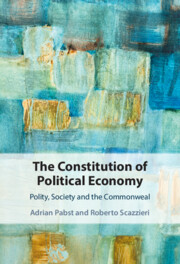
The Constitution of Political Economy
- Polity, Society and the Commonweal
-
- Published online:
- 03 August 2023
- Print publication:
- 17 August 2023
1 - Grotius
-
- Book:
- Modern Moral Philosophy
- Published online:
- 10 June 2023
- Print publication:
- 15 June 2023, pp 15-38
-
- Chapter
- Export citation
15 - Temperament and Prosocial Behavior
- from Part II - Antecedents and Mechanisms of Prosociality
-
-
- Book:
- The Cambridge Handbook of Prosociality
- Published online:
- 25 May 2023
- Print publication:
- 08 June 2023, pp 300-319
-
- Chapter
- Export citation
Chapter 4 - The Bildung of Humanity and Modern Virtue
-
- Book:
- Herder and Enlightenment Politics
- Published online:
- 30 March 2023
- Print publication:
- 06 April 2023, pp 132-172
-
- Chapter
- Export citation
3 - ‘A Holy Indifference and Tolerant Favour’
-
- Book:
- Sexual Restraint and Aesthetic Experience in Victorian Literary Decadence
- Published online:
- 02 March 2023
- Print publication:
- 09 March 2023, pp 114-144
-
- Chapter
- Export citation
3 - Before Accra
-
- Book:
- African Activists in a Decolonising World
- Published online:
- 02 March 2023
- Print publication:
- 09 March 2023, pp 97-135
-
- Chapter
- Export citation
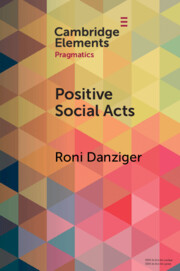
Positive Social Acts
- A Metapragmatic Exploration of the Brighter and Darker Sides of Sociability
-
- Published online:
- 12 December 2022
- Print publication:
- 05 January 2023
-
- Element
- Export citation
14 - Receptions, Contestations and Confusions
-
-
- Book:
- The Cambridge Companion to Pufendorf
- Published online:
- 25 November 2022
- Print publication:
- 17 November 2022, pp 362-385
-
- Chapter
- Export citation
Chapter 11 - Banter, Teasing and Politeness in Varro’s De Re Rustica
- from Part III - Im/Politeness in Use
-
-
- Book:
- Politeness in Ancient Greek and Latin
- Published online:
- 08 September 2022
- Print publication:
- 08 September 2022, pp 273-292
-
- Chapter
- Export citation
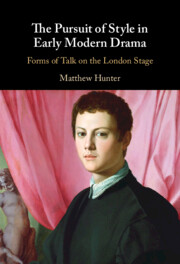
The Pursuit of Style in Early Modern Drama
- Forms of Talk on the London Stage
-
- Published online:
- 26 August 2022
- Print publication:
- 25 August 2022
2 - Reading, Sociability, and Warfare
- from Part I - The Blind Ruck of Event
-
-
- Book:
- The Cambridge Companion to the Literature of the American Civil War and Reconstruction
- Published online:
- 04 August 2022
- Print publication:
- 18 August 2022, pp 29-42
-
- Chapter
- Export citation
Chapter 5 - Neighbours, Friends, Company
-
- Book:
- Friends, Neighbours, Sinners
- Published online:
- 21 July 2022
- Print publication:
- 04 August 2022, pp 194-230
-
- Chapter
- Export citation
Chapter 4 - Drinking, Dancing, Talking
-
- Book:
- Friends, Neighbours, Sinners
- Published online:
- 21 July 2022
- Print publication:
- 04 August 2022, pp 151-193
-
- Chapter
- Export citation
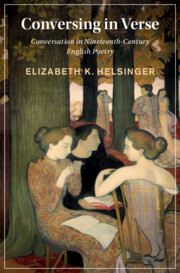
Conversing in Verse
- Conversation in Nineteenth-Century English Poetry
-
- Published online:
- 21 July 2022
- Print publication:
- 04 August 2022
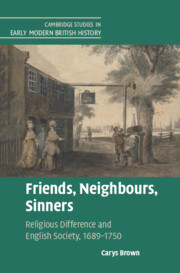
Friends, Neighbours, Sinners
- Religious Difference and English Society, 1689–1750
-
- Published online:
- 21 July 2022
- Print publication:
- 04 August 2022
Chapter 4 - Eighteenth-Century Musenhof Courts as Bridges and Brokers for Cultural Networks and Social Reform
-
-
- Book:
- Institutions of Literature, 1700–1900
- Published online:
- 30 June 2022
- Print publication:
- 21 July 2022, pp 83-100
-
- Chapter
- Export citation
5 - Culture and Sociability in the Provinces
-
- Book:
- Reading Medieval Ruins
- Published online:
- 31 March 2022
- Print publication:
- 07 April 2022, pp 149-181
-
- Chapter
- Export citation



